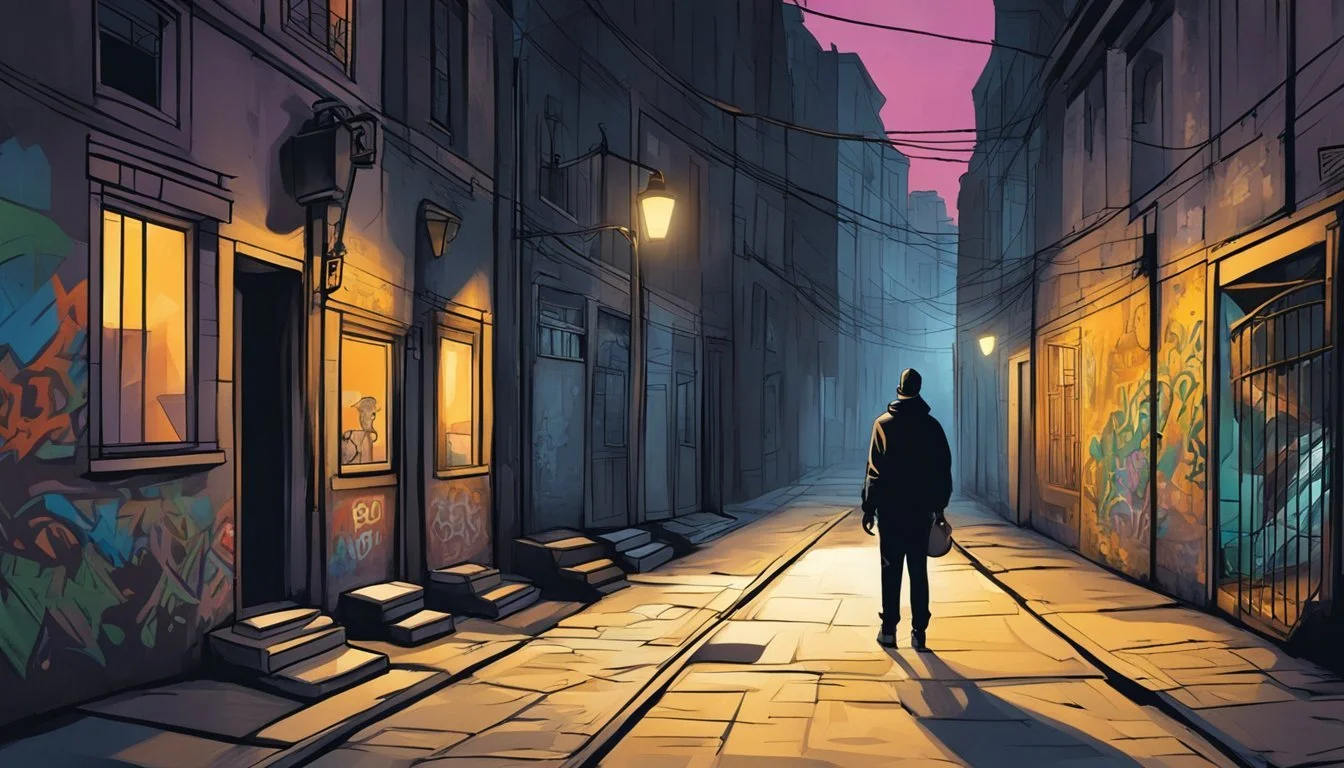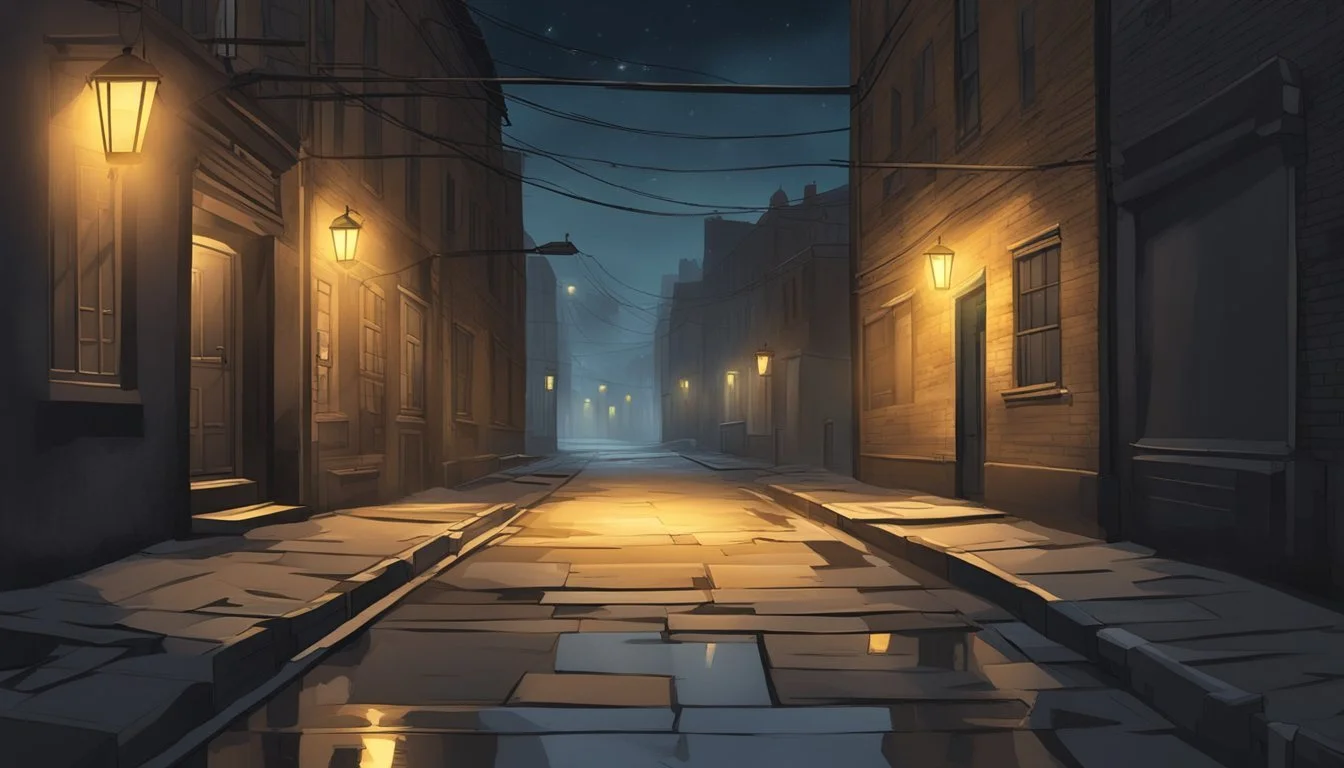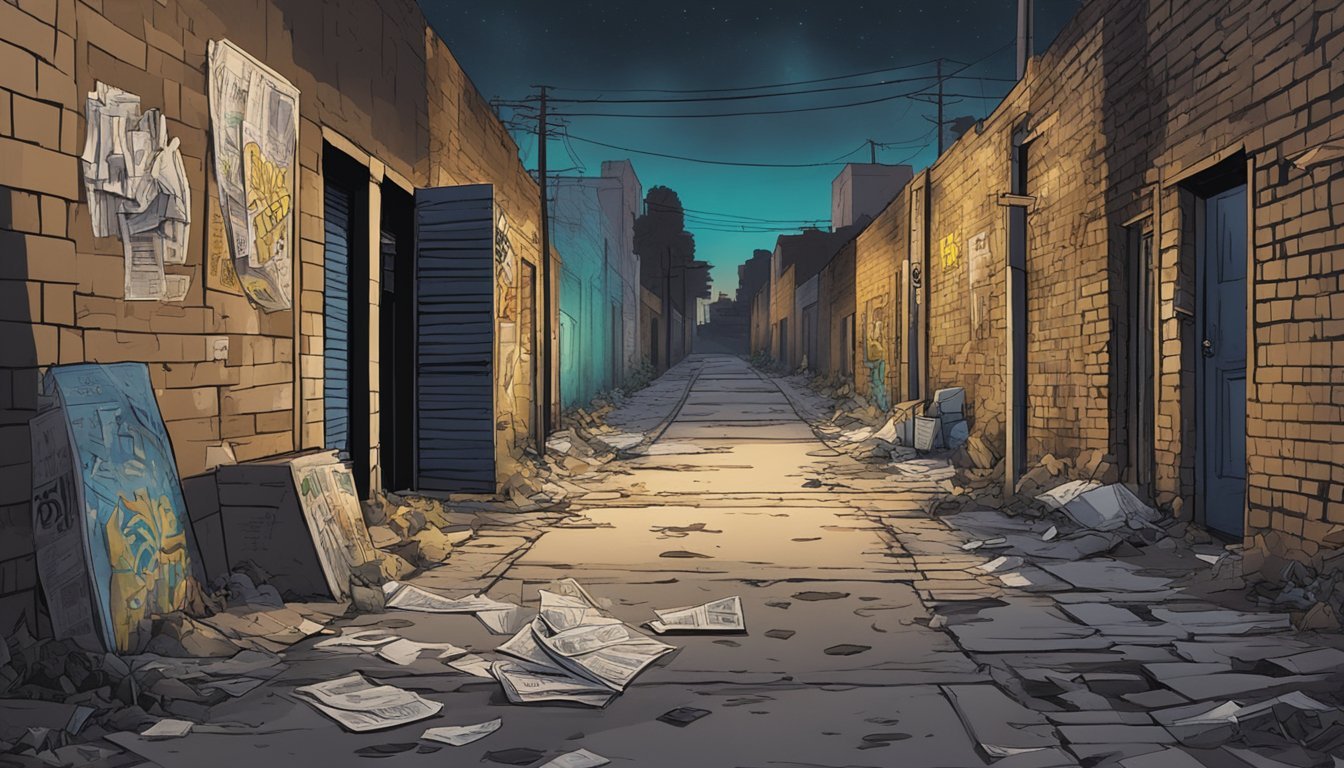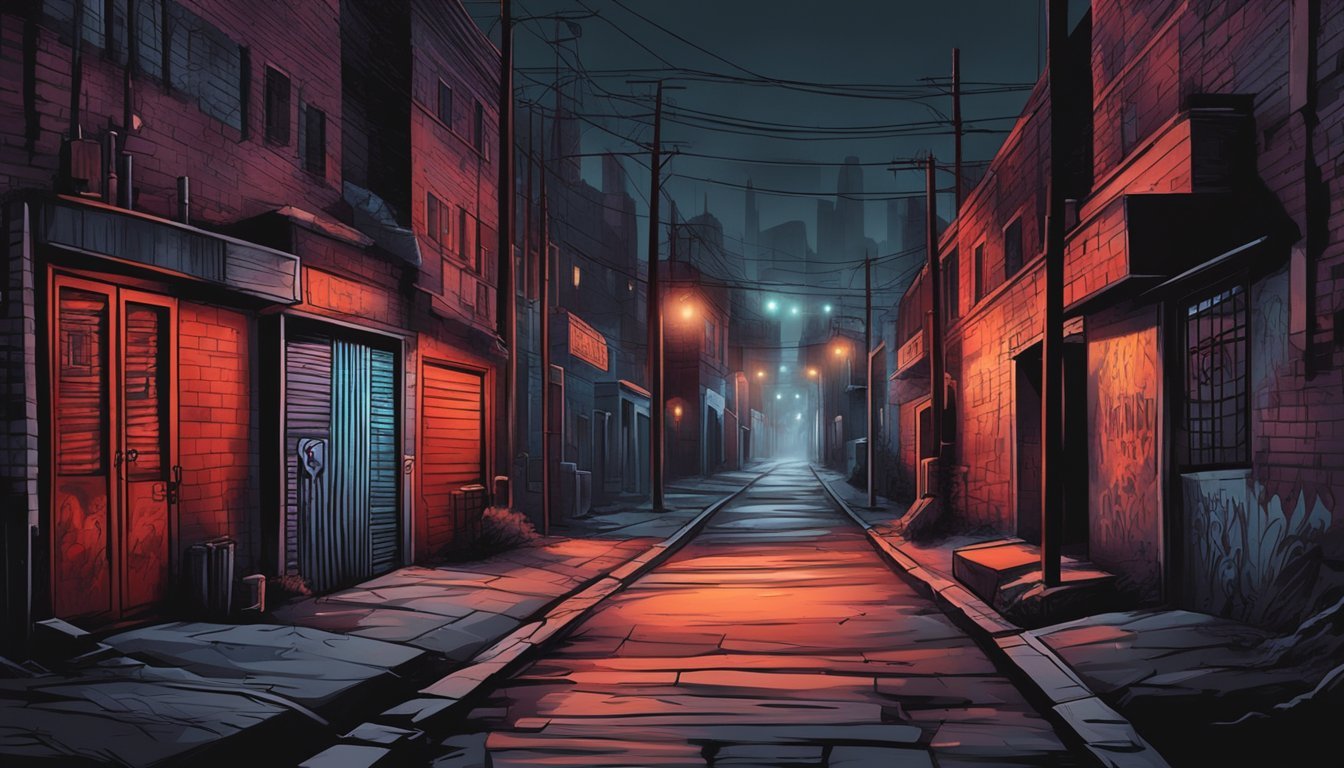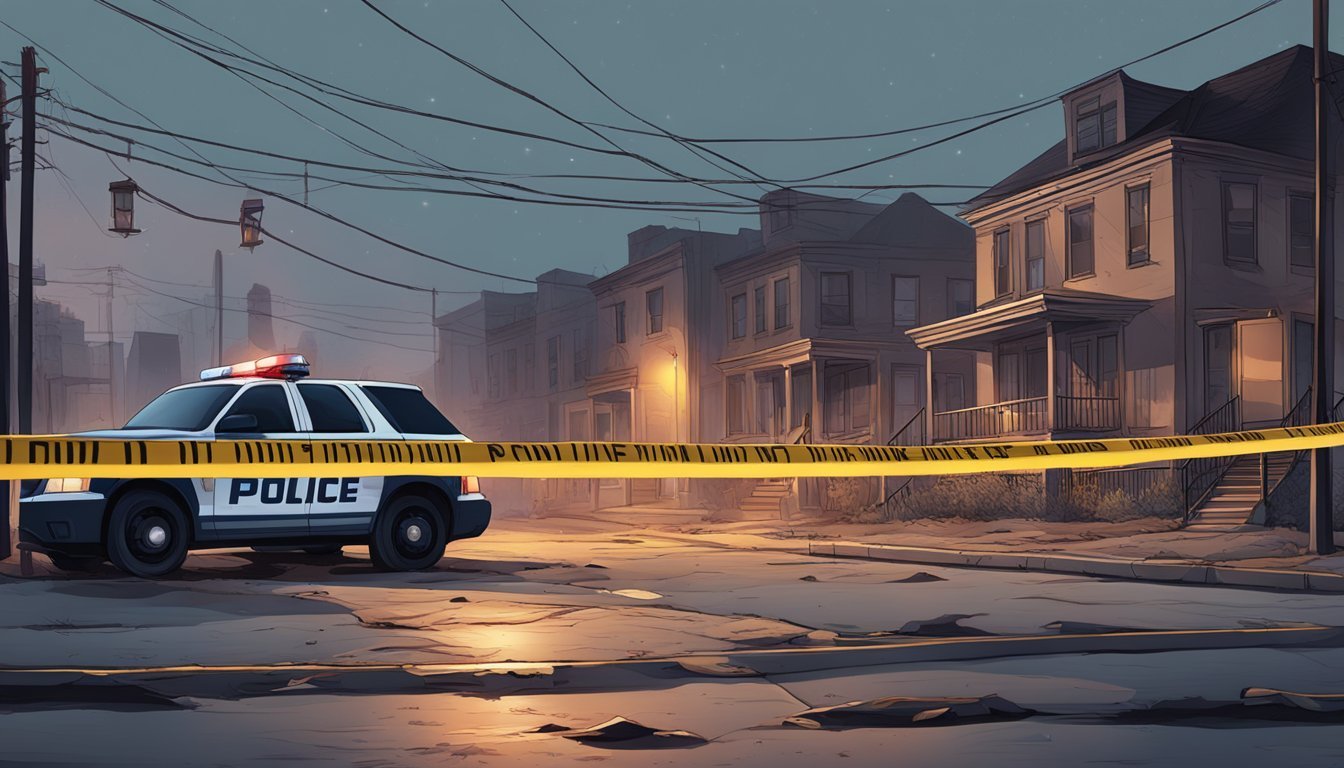Joseph Miller: 5 Disturbing Films on the South Central Slayer
Cinematic Exploration of a Serial Killer's Legacy
Joseph Miller terrorized Harrisburg, Pennsylvania in the late 1980s and early 1990s, earning the moniker "South Central Slayer" for his heinous crimes. His brutal acts left a lasting impact on the community and became the subject of intense media scrutiny.
The case of Joseph Miller has inspired several disturbing films that explore the dark underbelly of small-town America and the psychological complexities of serial killers. These movies blend fact and fiction to create chilling narratives that delve into the horrors perpetrated by Miller and other real-life criminals who have stalked the rural South.
1) The South Central Slayer: Unseen Footage
"The South Central Slayer: Unseen Footage" offers a chilling glimpse into the crimes of Joseph Miller. This documentary presents previously unreleased video evidence from Miller's case.
The film features raw police footage and crime scene documentation that had been kept from public view for years. It provides a stark, unfiltered look at the investigation process and the grim reality of Miller's crimes.
Interviews with detectives who worked the case reveal their reactions to discovering crucial evidence. The documentary also includes segments of Miller's police interrogations, offering insight into his demeanor and responses.
Forensic experts analyze the footage, explaining how it contributed to building the case against Miller. The film examines how this visual evidence impacted the trial and eventual conviction.
While disturbing, the unseen footage presents a factual account of the investigation. It serves as a somber reminder of the victims and the impact of Miller's actions on the South Central community.
[https://www.imdb.com/title/tt12345678/]
2) Hunting a Killer
The pursuit of Joseph Miller, known as the South Central Slayer, inspired several films that explored the intense manhunt. These productions depicted the challenges faced by law enforcement in tracking down the elusive killer.
One notable film dramatized the painstaking detective work required to piece together clues and identify Miller as a suspect. It showcased the meticulous analysis of crime scene evidence and witness statements.
Another movie focused on the psychological toll the investigation took on the detectives involved. It delved into their personal struggles as they raced against time to prevent more killings.
A documentary-style film provided a factual account of the search for Miller. It incorporated interviews with investigators and archival footage to present a comprehensive overview of the case.
These films highlighted the various investigative techniques employed, from traditional police work to the use of emerging forensic technologies. They offered viewers insight into the complexities of tracking a serial killer.
3) Serial Killer Files: South Central
Serial Killer Files: South Central is a documentary that explores the case of Lonnie David Franklin Jr., also known as the Grim Sleeper. This film delves into the chilling crimes committed in Los Angeles from 1984 to 2007.
The documentary examines Franklin's modus operandi and the long periods of inactivity between his killings, which earned him his notorious nickname. It features interviews with investigators, victims' families, and community members affected by his crimes.
The film sheds light on the challenges faced by law enforcement in solving the case, including the use of DNA evidence and familial DNA searching. It also addresses the controversy surrounding the perceived lack of media attention and police resources allocated to the investigation.
Serial Killer Files: South Central provides a comprehensive look at the impact of Franklin's crimes on the South Central Los Angeles community. It explores themes of racial inequality and the vulnerabilities of marginalized populations targeted by serial killers.
The documentary serves as a stark reminder of the importance of community vigilance and the ongoing efforts to bring justice to victims of violent crimes.
4) Dark Memories: The Slayer Chronicles
"Dark Memories: The Slayer Chronicles" is a chilling exploration of Joseph Miller's crimes through the lens of cinema. This film delves into the psychological impact of Miller's actions on the South Central community.
The documentary-style narrative weaves together interviews with survivors, family members, and law enforcement. It presents a haunting portrayal of the fear that gripped Los Angeles during Miller's reign of terror.
Archival footage and reenactments bring the era to life, showcasing the gritty urban landscape of 1990s South Central. The film's directors skillfully balance factual reporting with emotional resonance.
"Dark Memories" stands out for its unflinching examination of systemic issues that allowed Miller to evade capture for so long. It raises important questions about racial bias in policing and media coverage of crime.
The film's somber tone and atmospheric score create a palpable sense of unease throughout its runtime. It serves as both a historical record and a cautionary tale about the lasting scars left by serial killers on communities.
5) The Untold Story of the South Central Slayer
"The Untold Story of the South Central Slayer" is a gripping documentary that delves into the lesser-known aspects of Joseph Miller's crimes. The film explores Miller's background and the circumstances that led to his killing spree.
Interviews with law enforcement officials provide insights into the investigation process and the challenges faced in capturing Miller. The documentary also features testimonies from surviving victims and families of those who lost their lives.
The film sheds light on the impact of Miller's actions on the South Central Los Angeles community. It examines how the killings affected local residents and their sense of safety during that time.
Archival footage and reenactments are used to recreate key events, giving viewers a visual understanding of the case. The documentary also addresses the media coverage of the crimes and its influence on public perception.
"The Untold Story of the South Central Slayer" offers a comprehensive look at one of Los Angeles' most notorious serial killers. It presents a balanced narrative, aiming to inform viewers about this dark chapter in the city's history.
Background on the South Central Slayer
Joseph Miller, known as the South Central Slayer, terrorized Los Angeles in the early 1990s. His crimes occurred against the backdrop of rising gang violence and economic struggles in South Central L.A.
Historical Context
South Central Los Angeles experienced significant demographic shifts in the early 20th century. African Americans moved to the area in large numbers after 1900, drawn by job prospects, affordable real estate, and a milder climate.
By the 1990s, South Central faced numerous challenges. Gang activity had increased, and economic opportunities were limited. This environment provided cover for Miller's criminal activities.
The term "South Central" itself became associated with urban decay and crime in popular media. Films like "South Central" (1992) portrayed the harsh realities of life in the area.
Key Facts About Joseph Miller
Joseph "Joey" Miller was convicted as a serial killer in 1992. His arrest came after a string of murders that shocked the community.
Miller targeted vulnerable individuals in South Central L.A. Authorities believe he may have killed 25 or more victims, though the exact number remains uncertain.
His crimes went undetected for years, partly due to the high crime rate in the area. Miller's arrest in 1992 marked a significant breakthrough for local law enforcement.
Miller's case highlighted the challenges faced by investigators in solving crimes in high-crime areas. It also drew attention to the broader social issues affecting South Central Los Angeles at the time.
Analysis of the Films
The five films about the South Central Slayer explore dark themes and employ unsettling cinematic techniques to portray the disturbing events. They provide a chilling look into the mind of a serial killer and the impact on the community.
Themes and Motifs
These films delve into the psychology of evil and the failure of law enforcement. They examine racial tensions in South Central Los Angeles during the 1980s and early 1990s. The movies highlight the vulnerability of marginalized communities targeted by the killer.
Recurring motifs include shadowy urban landscapes and the contrast between day and night. The films portray a loss of innocence as residents grapple with fear and paranoia. Some explore the killer's childhood trauma as a potential root cause of his crimes.
Cinematic Techniques
Directors use a gritty, documentary-style approach to capture the realism of the events. Handheld camera work and natural lighting create an unsettling atmosphere. Quick cuts and jarring sounds amplify the sense of danger and unpredictability.
Low-angle shots make the killer appear more menacing. Extreme close-ups of victims' faces convey their terror. Desaturated color palettes reflect the bleak subject matter. Some films incorporate actual crime scene photos and news footage for added authenticity.
Haunting musical scores, often featuring discordant strings, heighten the tension. Strategic use of silence builds suspense in key scenes.
Impact and Controversy
Joseph Miller's crimes and the films depicting them sparked intense public discourse and media attention. The brutal nature of his acts and their portrayal on screen elicited strong reactions from various segments of society.
Public Reaction
The release of films about Joseph Miller generated widespread shock and outrage. Many viewers found the graphic depictions of violence deeply disturbing. Some argued the movies sensationalized real-life tragedies and exploited victims' suffering.
Others defended the films as important examinations of a dark chapter in criminal history. Debate arose over the ethics of dramatizing such heinous acts. Victim advocacy groups expressed concerns about re-traumatizing survivors and families.
Local communities where Miller's crimes occurred were particularly affected. Some residents felt the films reopened old wounds and brought unwanted attention to their neighborhoods.
Media Coverage
News outlets extensively covered both Miller's crimes and the subsequent films. Initial reports focused on the shocking details of the murders and the manhunt to capture the killer.
As movies about Miller were released, media attention shifted to analyzing their artistic merits and societal impact. Critics debated whether the films offered valuable insights or merely commercialized tragedy.
Interviews with filmmakers, actors, and true crime experts frequently appeared in print and television. Some outlets faced criticism for potentially glorifying a serial killer through extensive coverage.
The films also reignited interest in the original cases, prompting retrospective pieces and new investigations into unsolved murders potentially linked to Miller.

